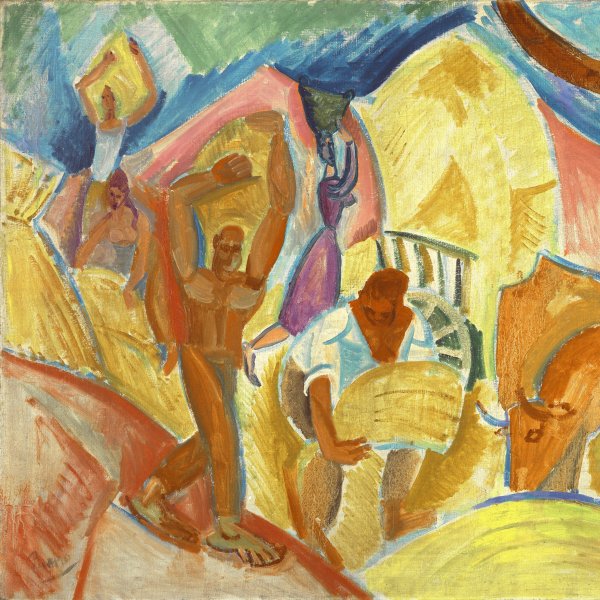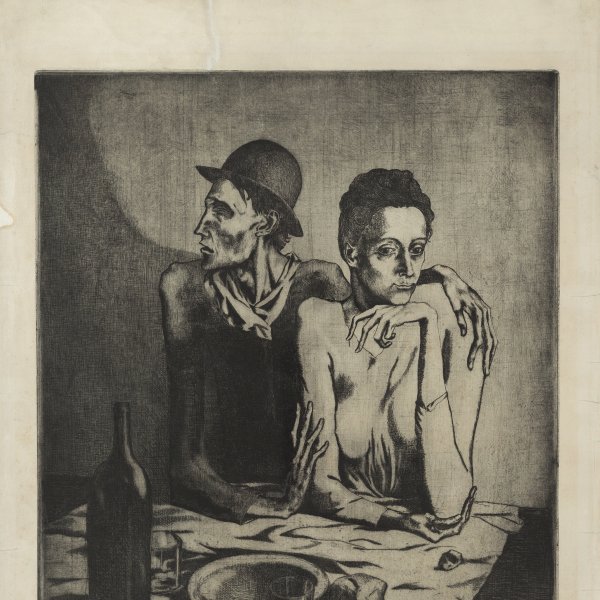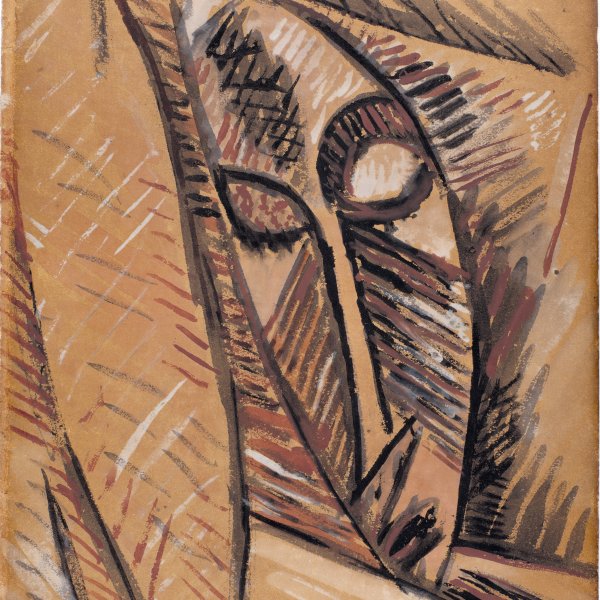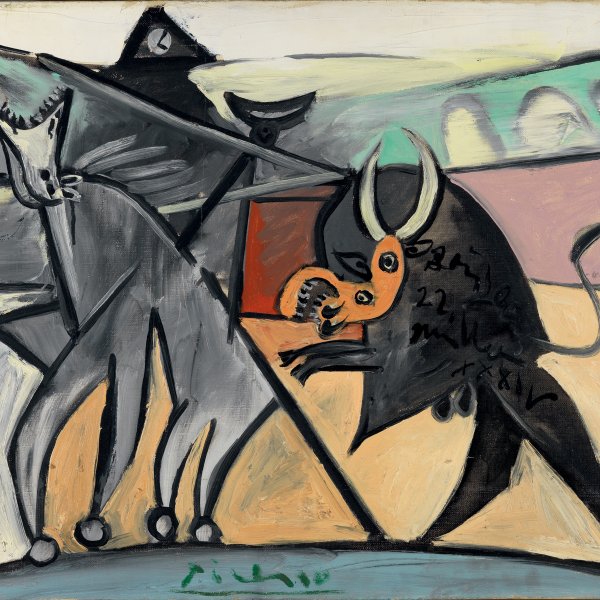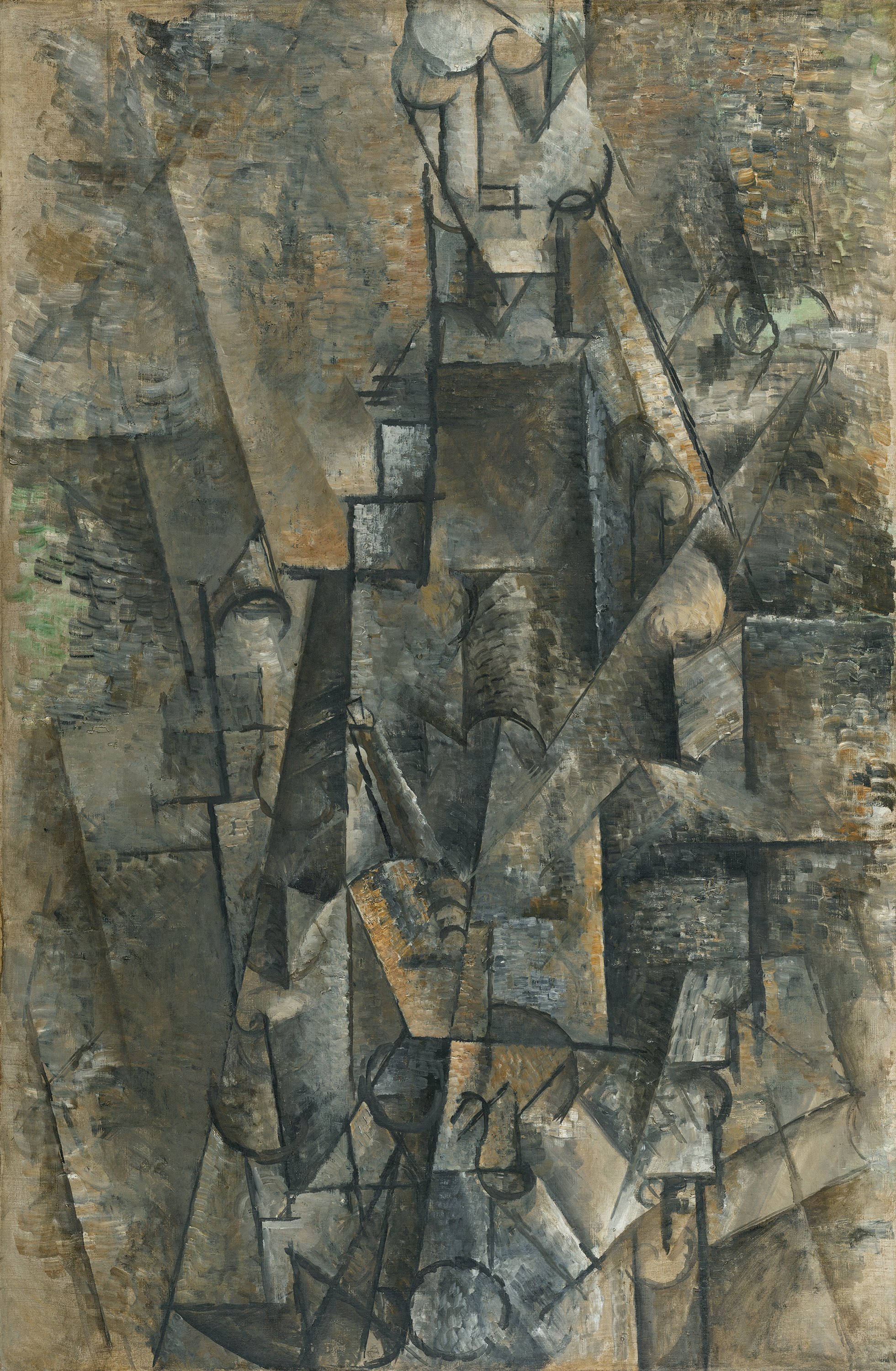Man with a Clarinet
Picasso painted Man with a Clarinet, a masterpiece of Analytical Cubism, in the autumn of 1911, after spending the summer with Braque in Céret. This pyramidal composition, fanning out from the base, depicts a figure holding a musical instrument, of which only the most basic elements can be deciphered. The framework of the man’s figure is constructed using just a few straight and curved lines; colour, applied using a Neo-Impressionist technique, is reduced to a wide range of ochres and greys, through which Picasso achieves astounding tonal contrasts and pictorial effects. Although the extreme fragmentation of form encourages an abstract rather than a figurative reading, Picasso retains the vertical positioning of the figure used in conventional portraits.
Pablo Picasso’s Man with a Clarinet, a masterpiece from what Kahnweiler described as the hermetic period when analytical Cubism reached its height of development, was chosen by Apollinaire to illustrate his essay Les Peintres cubists published in 1913 by Eugène Figuière. According to Pierre Daix, Picasso produced the painting in his studio on the boulevard de Clichy in autumn 1911 or winter 1912, after spending the summer in Céret in the French Pyrenees, working in close collaboration with Georges Braque.
Using a pyramidal composition that fans out, Picasso depicts the figure of a man holding a musical instrument, perhaps a clarinet, of which only the most basic signs can be deciphered. Lewis Kachur identifies the cylindrical shape as a tenora, a double-reeded woodwind instrument used to play the sardana, a type of Catalan folk music. The framework of the image is built from a pattern of straight and curving lines, which, according to Pierre Daix, display the influence of the volumes of the local architecture of Céret ; and also from colour, reduced to a broad palette of ochres and greys with which the painter achieves astonishing tonal contrasts and painterly effects. The Neo-Impressionistic technique of small, concentrated brushstrokes gives the surface a somewhat metallic appearance. This surface is not homogenous and creates the effect of relief texture, as paint accumulates in thick strokes in the centre of the painting, whereas at the edges it is applied in thinner layers, thereby, as Christopher Green points out, “enhancing its presence as a material object, a tableau-objet.”
Although the formal decomposition calls for a reading that is more abstract than figurative — indicating that analytical Cubism was moving closer to abstraction — the present work could be related to a series of portraits dating from the same period. Picasso subjects the human figure to extreme fragmentation, but retains its vertical position as in conventional portraiture. This arrangement leads us to assume that the present work is a portrait, even though only a few individual features of the person and setting are visible. Elizabeth Cowling considers that, in addition to evoking the presence of an individual, the painting contains certain musical allusions that make these Cubist portraits evocations of attitudes, sensations, atmospheres or feelings as powerful as they are intangible. It is as if, instead of portraits in the usual sense, they were portraits of the artist’s memories of the person. In this respect they may be connected to Mallarmé’s idea of “art of suggestion, ” which led André Lhote to view Cubist paintings as “constructions mallarméennes.”
As Anne Baldassari has disclosed, Picasso drew inspiration for many of the portraits dating from this period from a series of photographs he took in the studio on the boulevard de Clichy during autumn 1910 and winter 1911. In them he and his friends Ramón Pichot, Max Jacob, Guillaume Apollinaire, Frank Burty Haviland and Daniel-Henry Kahnweiler pose seated in front of a wall on which hangs a curious hotchpotch of paintings, drawings, masks and, more significantly, various musical instruments.
In 1912 Kahnweiler sold the painting to the Paris-based German collector Wilhelm Uhde, whose portrait Picasso had painted in 1910. As Uhde was a German national, during the First World War his works — like those of Kahnweiler — were confiscated and sold in a public auction at the Hôtel Drouot on 30 May 1921. On the occasion of this sale, in which Man with a Clarinet was acquired by an anonymous collector, André Breton had the chance to view and admire this painting, which he described as “a work of fabulous elegance.” In 1937 it was incorporated into the collection of the historian of Cubism Douglas Cooper and in 1982 it entered the Thyssen-Bornemisza collection.
Paloma Alarcó





